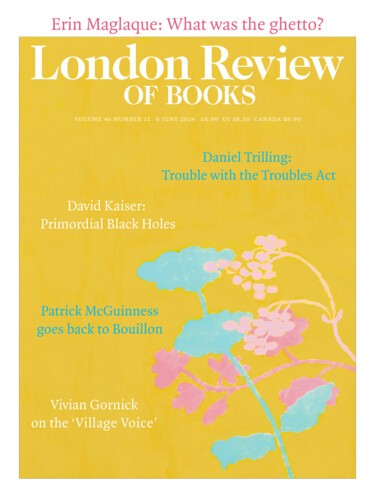We walked in the darkness beneath beeches and hornbeams until, suddenly, we heard the sound of birdsong, an ethereal noise, a sound associated with daytime. What bird would sing the song of day two hours after dusk? Only a creature of myth, a night-singer, the nihtegala – from the Old English nihte and galan, to sing, call, enchant.
For thousands of years this night-singer’s song has been thought of as a mourner’s lament. According to mythology more ancient than Homer, Zeus turned Aedon into a nightingale after she mistakenly killed her own son. In the Odyssey, Penelope lies awake at night longing for Odysseus and thinks of Aedon, who wails for the child she has slain. For Ovid, the nightingale’s song was that of a raped and mutilated woman. In the poetry of the 13th-century Franciscan John Peckham, the nightingale foresees the hour of her own death, singing from the top of a tree and descending ever lower, until finally she expires on the lowest branch at the ninth hour.
Nightingales winter in sub-Saharan West Africa and then journey six thousand kilometres north to breed in Europe and the Middle East. Some five thousand of them arrive on our shores each spring. A few weeks ago, I and a group of friends and relatives went to Sussex with Sam Lee, an author and folk singer, to hear the nightingales sing. We stopped near a thicket and listened. It was a virtuoso performance: syrupy and sinuous, full of riffs and trills. The author of The Owl and the Nightingale (c.1210) suggested that it sounds like human music – more redolent of the ‘harpe and pipe þan of þrote [than of throat]’. The song is punctuated by rich, almost painful pauses. In the silence, one imagines the bird has come to the end of a verse and is considering, with the ease and confidence of a seasoned performer, where to take the song next. John Keats wrote that nightingales sing ‘with full-throated ease’ – that’s true of the song and also of the gaps in the song.
In the darkness your non-visual senses are more alive. Lying in the grass, damp with dew, I thought of a line from John Lydgate’s 15th-century poem about nightingales. The narrator describes the way ‘the bawmy vapour of grassis gan vp-smyte [began to rise]’. As we listened, the violinist Conor Gricmanis played to the nightingale, which sang back. The bird’s fondness for performing along with us is well known. In May 1924, Beatrice Harrison was recorded playing her cello with nightingales in one of the BBC’s first live outside radio broadcasts.
Although it is often thought of as a haunted figure, the nightingale’s appearance in spring means that it has also long been associated with romance. Its singing must have been the sonic backdrop to many a midnight assignation. Fittingly, a nightingale appears in one of medieval literature’s great sex scenes, in Chaucer’s Troilus and Criseyde. After thousands of lines of preamble, the couple finally go to bed together. Criseyde wraps herself around Troilus, like a ‘sote wode-binde’ [honeysuckle] around a tree. Lying entwined with him she is described as like ‘the newe abaysshed [abashed] nightingale’ that pauses before singing. Then, ‘after siker dooth hir voys out-ringe’ [‘afterwards, in safety, lets her voice ring out’]. For Chaucer, the nightingale’s song, and its pregnant pauses, symbolised the tenderness of lovers who finally find safety in each other’s arms.
In Laüstic, a lay from Brittany by the 12th and 13th-century Anglo-Norman poet Marie de France, two lovers in adjacent houses speak to each other by night at their open windows. The woman is married; when her husband asks what keeps her up all night, she answers that it is the nightingale: ‘Il nen ad joie en cest mund/Ki n’ot le laüstic chanter.’ [‘He has no joy in this world, who has not heard the nightingale sing.’] Enraged that this nightly vigil is keeping his wife from his bed, the husband has the nightingale trapped. He breaks its neck in front of her and throws its corpse at her breast. In grief she wraps it in fine silk and sends it to her lover, who has it cased in gold and jewels. The death of the bird symbolises the death of love, but the jewelled reliquary is a monument to love lost.
Many poets assumed it was the female nightingale who sang, but in fact it is the male, who sings to mark his territory and to attract a mate. Nightingales are picky, returning every year to the same spot, often to within a couple of hundred metres of the nest in which they were hatched. The male will try to mate within six weeks of beginning his singing; these are nights and nights of love-song. Once a male has been chosen by a hen bird and the pair have mated, she will lay a clutch of olive green eggs in the leaf litter – the ideal environment is dense scrub or coppice, increasingly in short supply in the South of England. She incubates the eggs for around two weeks until they hatch, when both parents will feed the young.
Because of their territorial nature, nightingales are particularly susceptible to the effects of habitat loss; climate change and the widespread use of insecticides are pushing them to the brink of extinction in the UK. The nightingale is now one of seventy birds on the Red List of threatened species. Listening to a nightingale, Keats wrote:
Thou wast not born for death, immortal Bird!
No hungry generations tread thee down;
The voice I hear this passing night was heard
In ancient days by emperor and clown:
The immortal bird may soon stop coming to England to breed and the song of the nightingale will be heard no more in our woods and thickets.
Send Letters To:
The Editor
London Review of Books,
28 Little Russell Street
London, WC1A 2HN
letters@lrb.co.uk
Please include name, address, and a telephone number.

